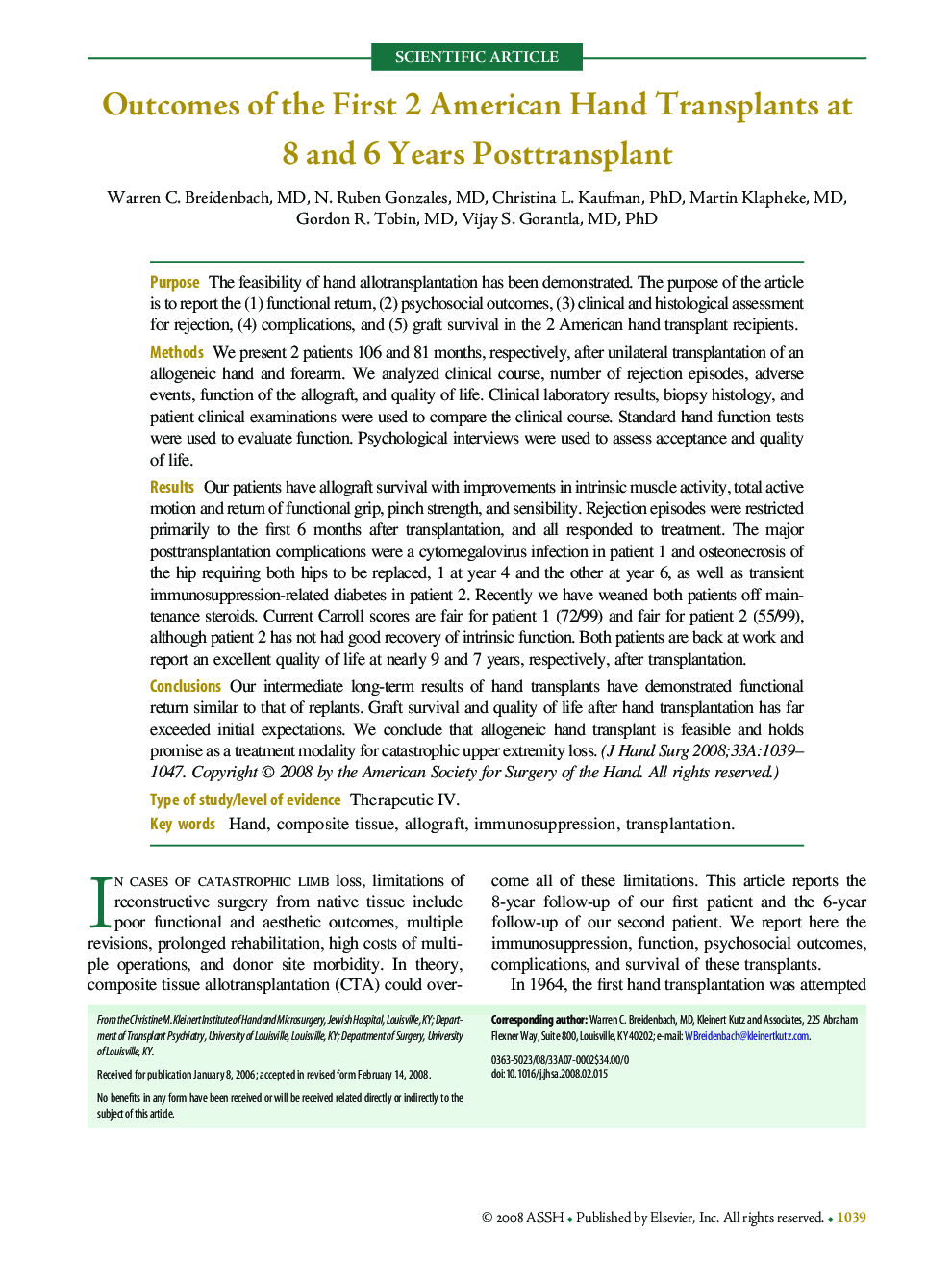| Article ID | Journal | Published Year | Pages | File Type |
|---|---|---|---|---|
| 4071363 | The Journal of Hand Surgery | 2008 | 9 Pages |
PurposeThe feasibility of hand allotransplantation has been demonstrated. The purpose of the article is to report the (1) functional return, (2) psychosocial outcomes, (3) clinical and histological assessment for rejection, (4) complications, and (5) graft survival in the 2 American hand transplant recipients.MethodsWe present 2 patients 106 and 81 months, respectively, after unilateral transplantation of an allogeneic hand and forearm. We analyzed clinical course, number of rejection episodes, adverse events, function of the allograft, and quality of life. Clinical laboratory results, biopsy histology, and patient clinical examinations were used to compare the clinical course. Standard hand function tests were used to evaluate function. Psychological interviews were used to assess acceptance and quality of life.ResultsOur patients have allograft survival with improvements in intrinsic muscle activity, total active motion and return of functional grip, pinch strength, and sensibility. Rejection episodes were restricted primarily to the first 6 months after transplantation, and all responded to treatment. The major posttransplantation complications were a cytomegalovirus infection in patient 1 and osteonecrosis of the hip requiring both hips to be replaced, 1 at year 4 and the other at year 6, as well as transient immunosuppression-related diabetes in patient 2. Recently we have weaned both patients off maintenance steroids. Current Carroll scores are fair for patient 1 (72/99) and fair for patient 2 (55/99), although patient 2 has not had good recovery of intrinsic function. Both patients are back at work and report an excellent quality of life at nearly 9 and 7 years, respectively, after transplantation.ConclusionsOur intermediate long-term results of hand transplants have demonstrated functional return similar to that of replants. Graft survival and quality of life after hand transplantation has far exceeded initial expectations. We conclude that allogeneic hand transplant is feasible and holds promise as a treatment modality for catastrophic upper extremity loss.Type of study/level of evidenceTherapeutic IV.
